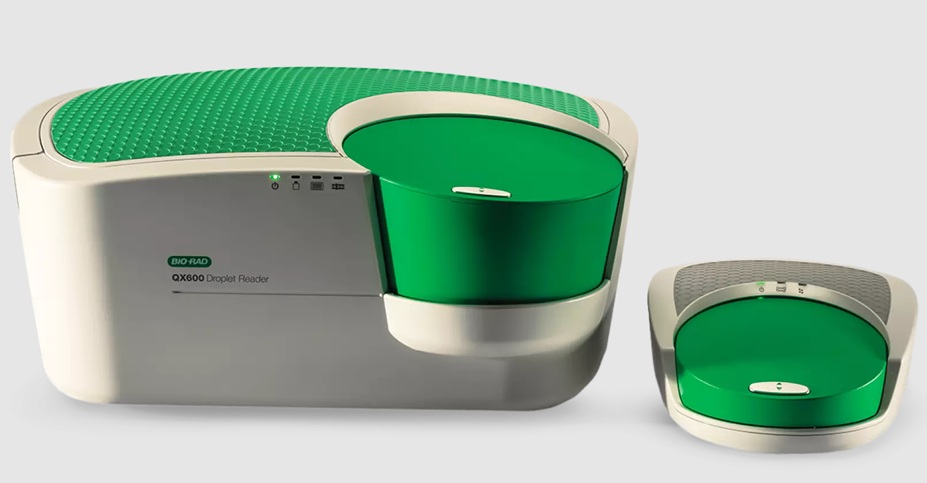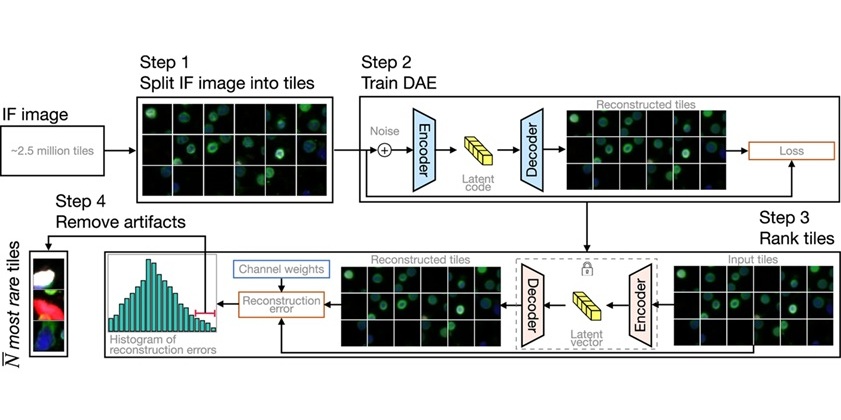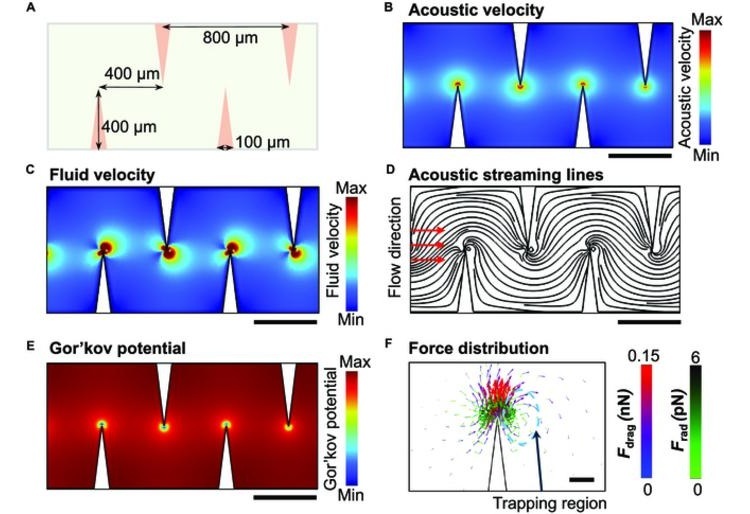A Potential Point-of-Care Method for the Diagnosis of Sepsis
|
By LabMedica International staff writers Posted on 21 Nov 2019 |
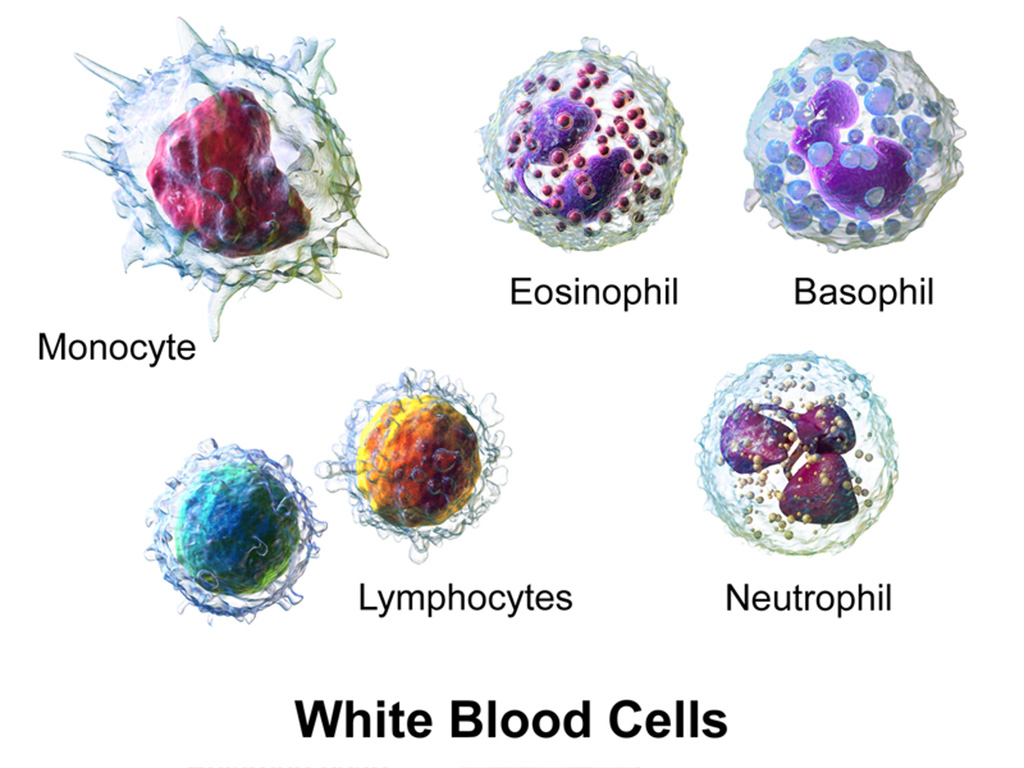
Image: Three-dimensional rendering of various types of white blood cells (Photo courtesy of Wikimedia Commons)
As part of the effort to create better methods to detect and treat sepsis, researchers developed a technique that enables measurement of the activation and function of white blood cells.
Sepsis is caused by an inflammatory immune response triggered by an infection. It is a life-threatening condition that arises when the body's response to infection causes injury to its own tissues and organs. Common signs and symptoms include fever, increased heart rate, increased breathing rate, and confusion. There may also be symptoms related to a specific infection, such as a cough with pneumonia, or painful urination with a kidney infection. In the very young, old, and people with a weakened immune system, there may be no symptoms of a specific infection and the body temperature may be low or normal, rather than high.
Current testing and diagnostic approaches fail to provide the precise and timely information needed to treat sepsis. To correct this, investigators at Brigham and Women's Hospital (Boston, MA, USA) designed a new method, based on microfluidics, which relies on minute channels to separate 50 microliter samples of peripheral blood into fractions comprising either the larger white blood cells or the smaller red blood cells and other elements of the blood.
The size-based microfluidic method was combined with novel isodielectric separation technology - developed by colleagues at the Massachusetts Institute of Technology (Cambridge, MA) - which measured cellular electrical activity. This method detected changes that occurred when white blood cells became activated and could distinguish patients with and without inflammation, such as in sepsis.
The investigators used the system to assess leukocyte phenotype and function over a period of seven days in serial samples from 18 hospitalized patients with sepsis and 10 healthy subjects.
Results revealed that the sepsis samples had significantly higher levels of CD16dim and CD16− neutrophils and CD16+ “intermediate” monocytes, as well as significantly lower levels of neutrophil-elastase release, O2 production, and phagolysosome formation. Repeated sampling of sepsis patients over seven days showed that leukocyte activation (measured by isodielectric separation) and leukocyte phenotype and function were significantly more predictive of the clinical course than complete-blood-count parameters.
"Our idea was to develop a point-of-care diagnostic test that, instead of focusing on the white blood cell count, would inform us about white blood cell activation state and function," said senior author Dr. Bruce Levy, chief of the division of pulmonary and critical care medicine at Brigham and Women's Hospital. "It has been exciting for us, as translational scientists, to work on a solution with outstanding bioengineer colleagues. Together, we are able to address a truly important clinical problem."
The potential use of the leukocyte function test to diagnose sepsis was described in the November 11, 2019, online edition of the journal Nature Biomedical Engineering.
Related Links:
Brigham and Women's Hospital
Massachusetts Institute of Technology
Sepsis is caused by an inflammatory immune response triggered by an infection. It is a life-threatening condition that arises when the body's response to infection causes injury to its own tissues and organs. Common signs and symptoms include fever, increased heart rate, increased breathing rate, and confusion. There may also be symptoms related to a specific infection, such as a cough with pneumonia, or painful urination with a kidney infection. In the very young, old, and people with a weakened immune system, there may be no symptoms of a specific infection and the body temperature may be low or normal, rather than high.
Current testing and diagnostic approaches fail to provide the precise and timely information needed to treat sepsis. To correct this, investigators at Brigham and Women's Hospital (Boston, MA, USA) designed a new method, based on microfluidics, which relies on minute channels to separate 50 microliter samples of peripheral blood into fractions comprising either the larger white blood cells or the smaller red blood cells and other elements of the blood.
The size-based microfluidic method was combined with novel isodielectric separation technology - developed by colleagues at the Massachusetts Institute of Technology (Cambridge, MA) - which measured cellular electrical activity. This method detected changes that occurred when white blood cells became activated and could distinguish patients with and without inflammation, such as in sepsis.
The investigators used the system to assess leukocyte phenotype and function over a period of seven days in serial samples from 18 hospitalized patients with sepsis and 10 healthy subjects.
Results revealed that the sepsis samples had significantly higher levels of CD16dim and CD16− neutrophils and CD16+ “intermediate” monocytes, as well as significantly lower levels of neutrophil-elastase release, O2 production, and phagolysosome formation. Repeated sampling of sepsis patients over seven days showed that leukocyte activation (measured by isodielectric separation) and leukocyte phenotype and function were significantly more predictive of the clinical course than complete-blood-count parameters.
"Our idea was to develop a point-of-care diagnostic test that, instead of focusing on the white blood cell count, would inform us about white blood cell activation state and function," said senior author Dr. Bruce Levy, chief of the division of pulmonary and critical care medicine at Brigham and Women's Hospital. "It has been exciting for us, as translational scientists, to work on a solution with outstanding bioengineer colleagues. Together, we are able to address a truly important clinical problem."
The potential use of the leukocyte function test to diagnose sepsis was described in the November 11, 2019, online edition of the journal Nature Biomedical Engineering.
Related Links:
Brigham and Women's Hospital
Massachusetts Institute of Technology
Latest Molecular Diagnostics News
- Urine Test Detects Early Stage Pancreatic Cancer
- Genomic Test Could Reduce Lymph Node Biopsy Surgery in Melanoma Patients
- Urine Test Could Replace Painful Kidney Biopsies for Lupus Patients
- Blood Test Guides Post-Surgical Immunotherapy for Muscle-Invasive Bladder Cancer
- Mitochondrial DNA Mutations from Kidney Stressors Could Predict Future Organ Decline
- Blood Test Could Predict Bariatric Surgery Outcomes in Teenagers
- ctDNA Blood Test to Help Personalize Postsurgical Colon Cancer Treatment
- AI Powered Blood Test Predicts Suicide Risk in Bipolar Patients
- DNA Sensor Enables Molecular Detection from Single Blood Drop
- DNA-Powered Test Accurately Detects E. Coli Lookalike Bacteria
- World’s Fastest DNA Sequencing Technique to Revolutionize NICU Genomic Care
- Blood Test Uses Cell-Free DNA to Detect ALS Faster and More Accurately
- Multi-Cancer Early Detection Blood Test Increases Cancer Detection
- Portable Label-Free Device Tracks Alzheimer's Disease in Real Time
- Liquid Biopsy Test Enables Early Detection of ICI-Related Myocarditis
- Rapid POC Diagnostic Test Detects Asymptomatic Malaria Cases
Channels
Clinical Chemistry
view channel
VOCs Show Promise for Early Multi-Cancer Detection
Early cancer detection is critical to improving survival rates, but most current screening methods focus on individual cancer types and often involve invasive procedures. This makes it difficult to identify... Read more
Portable Raman Spectroscopy Offers Cost-Effective Kidney Disease Diagnosis at POC
Kidney disease is typically diagnosed through blood or urine tests, often when patients present with symptoms such as blood in urine, shortness of breath, or weight loss. While these tests are common,... Read moreHematology
view channel
Viscoelastic Testing Could Improve Treatment of Maternal Hemorrhage
Postpartum hemorrhage, severe bleeding after childbirth, remains one of the leading causes of maternal mortality worldwide, yet many of these deaths are preventable. Standard care can be hindered by delays... Read more
Pioneering Model Measures Radiation Exposure in Blood for Precise Cancer Treatments
Scientists have long focused on protecting organs near tumors during radiotherapy, but blood — a vital, circulating tissue — has largely been excluded from dose calculations. Each blood cell passing through... Read more
Platelets Could Improve Early and Minimally Invasive Detection of Cancer
Platelets are widely recognized for their role in blood clotting and scab formation, but they also play a crucial role in immune defense by detecting pathogens and recruiting immune cells.... Read more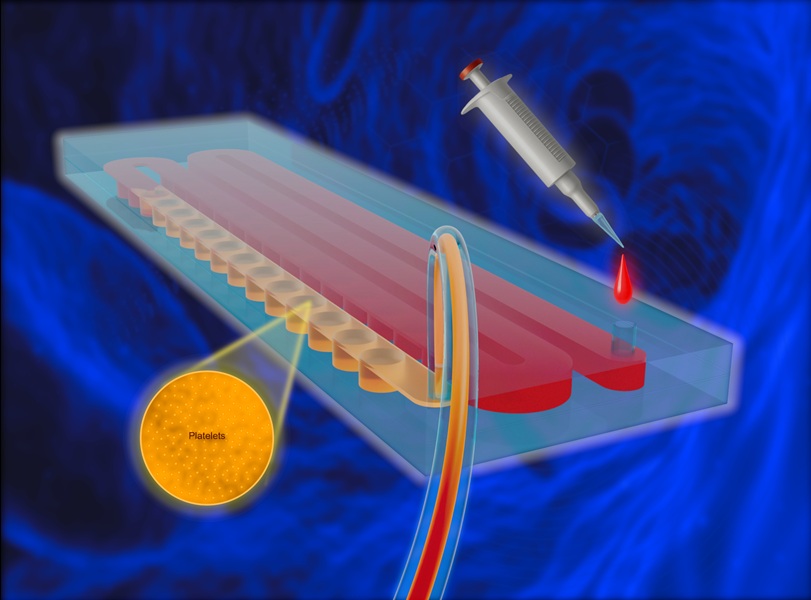
Portable and Disposable Device Obtains Platelet-Rich Plasma Without Complex Equipment
Platelet-rich plasma (PRP) plays a crucial role in regenerative medicine due to its ability to accelerate healing and repair tissue. However, obtaining PRP traditionally requires expensive centrifugation... Read moreImmunology
view channel
Blood-Based Liquid Biopsy Model Analyzes Immunotherapy Effectiveness
Immunotherapy has revolutionized cancer care by harnessing the immune system to fight tumors, yet predicting who will benefit remains a major challenge. Many patients undergo costly and taxing treatment... Read more
Signature Genes Predict T-Cell Expansion in Cancer Immunotherapy
Modern cancer immunotherapies rely on the ability of CD8⁺ T cells to rapidly multiply within tumors, generating the immune force needed to eliminate cancer cells. However, the biological triggers behind... Read moreMicrobiology
view channel
Fast Noninvasive Bedside Test Uses Sugar Fingerprint to Detect Fungal Infections
Candida bloodstream infections are a growing global health threat, causing an estimated 6 million cases and 3.8 million deaths annually. Hospitals are particularly vulnerable, as weakened patients after... Read more
Rapid Sepsis Diagnostic Device to Enable Personalized Critical Care for ICU Patients
Sepsis is a life-threatening condition that occurs when the body’s response to infection spirals out of control, damaging organs and leading to critical illness. Patients often arrive at intensive care... Read morePathology
view channel
New Molecular Analysis Tool to Improve Disease Diagnosis
Accurately distinguishing between similar biomolecules such as proteins is vital for biomedical research and diagnostics, yet existing analytical tools often fail to detect subtle structural or compositional... Read more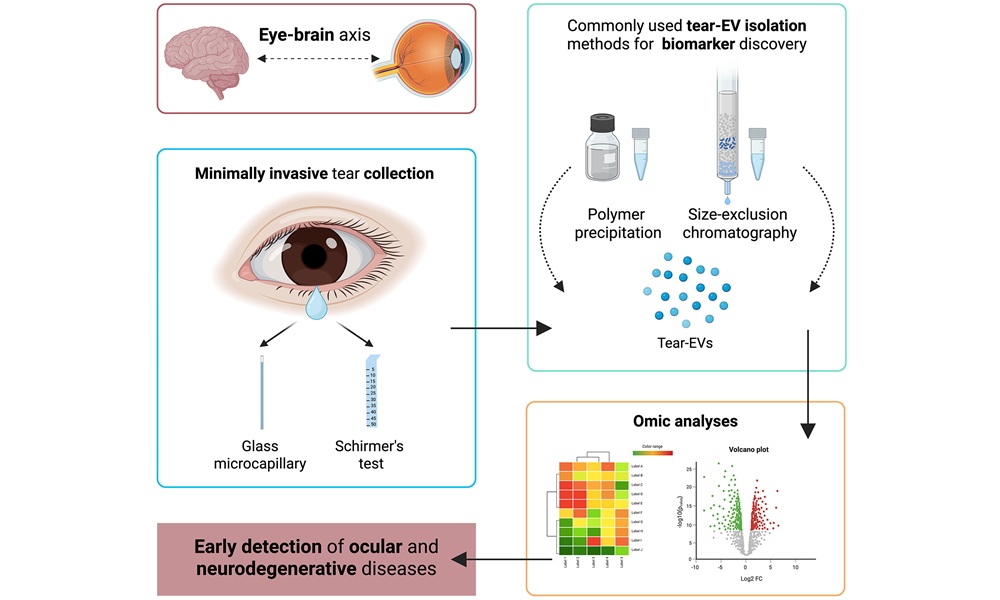
Tears Offer Noninvasive Alternative for Diagnosing Neurodegenerative Diseases
Diagnosing and monitoring eye and neurodegenerative diseases often requires invasive procedures to access ocular fluids. Ocular fluids like aqueous humor and vitreous humor contain valuable molecular information... Read moreTechnology
view channel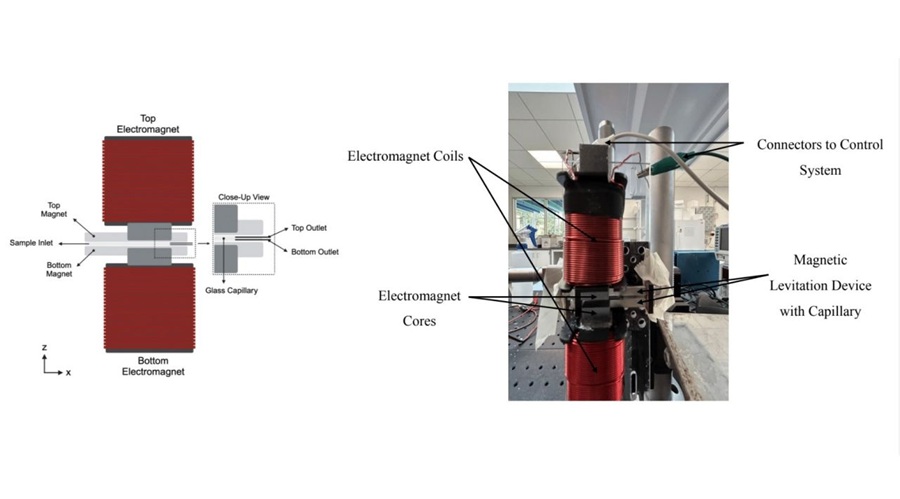
Cell-Sorting Device Uses Electromagnetic Levitation to Precisely Direct Cell Movement
Sorting different cell types—such as cancerous versus healthy or live versus dead cells—is a critical task in biology and medicine. However, conventional methods often require labeling, chemical exposure,... Read more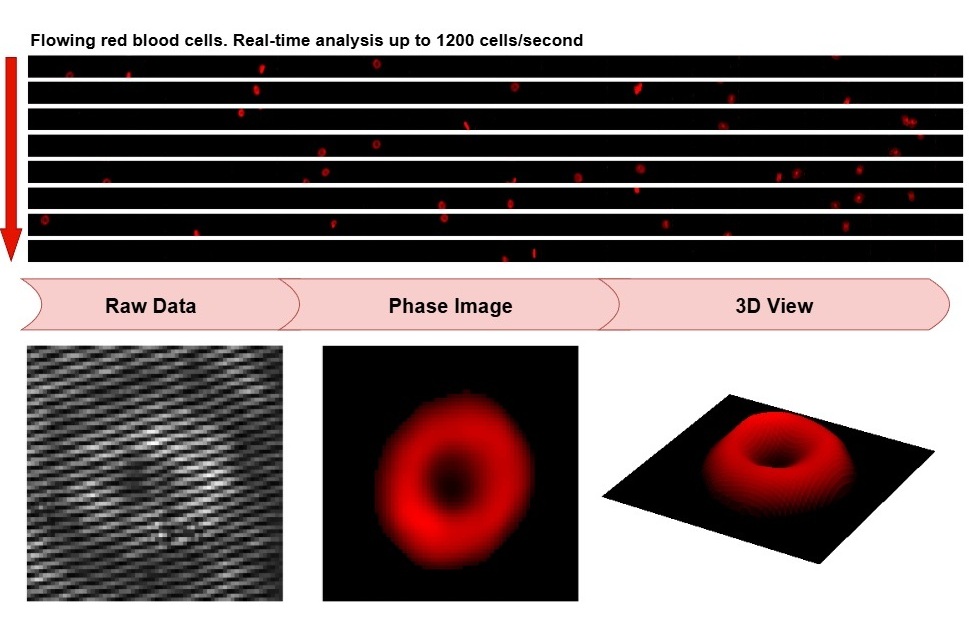
Embedded GPU Platform Enables Rapid Blood Profiling for POC Diagnostics
Blood tests remain a cornerstone of medical diagnostics, but traditional imaging and analysis methods can be slow, costly, and reliant on dyes or contrast agents. Now, scientists have developed a real-time,... Read moreIndustry
view channel
Puritan Medical Products Showcasing Innovation at AMP2025 in Boston
Puritan Medical Products (Guilford, ME, USA), the world’s most trusted manufacturer of swabs and specimen collection devices, is set to exhibit at AMP2025 in Boston, Massachusetts, from November 11–15.... Read more
Advanced Instruments Merged Under Nova Biomedical Name
Advanced Instruments (Norwood, MA, USA) and Nova Biomedical (Waltham, MA, USA) are now officially doing business under a single, unified brand. This transformation is expected to deliver greater value... Read more